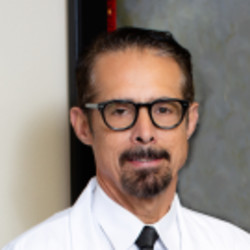When I first started my residency in physical medicine and rehabilitation in Puerto Rico, the scope of practice for physiatrists was relatively limited compared to current levels. I was excited about helping patients in need, but most physiatrists’ jobs in those days seemed limited to evaluating patients and referring them to physical therapy.
After I graduated from residency, a new movement was developing in the field: interventional physiatry. This resulted from the change that, around this time, the Saal brothers started performing interventional pain management procedures.
Medicine and its rules rapidly evolved in the early 1970s and 1980s. New procedures, drugs, and medical devices were invented or developed yearly. As new training programs and board certifications were created, the critical question of who was authorized to use each procedure was often played out in the court of medical opinion.
Legally, a medical degree authorized doctors to perform almost any procedure. However, many doctors learning the new procedures felt that additional formal training or a fellowship would mitigate possible legal actions, especially when outside their practice scope. The first formal pain management training program opened to students in 1978. Still, an official fellowship program in pain management was not discussed until 1989, after the American Board of Medical Subspecialties (ABMS) received a barrage of letters expressing concern that pain management education was fragmented among multiple specialties.
The first pain management fellowship was approved by ABMS a year after I completed my residency. At the time, pain management was housed as a subspecialty within anesthesiology, and I was busy completing my fellowship in musculoskeletal medicine.
Seeing the need for pain management education outside the setting of the surgical suite, I was determined to contribute to training in interventional physiatry. I established a fellowship program within my clinic to teach new physiatrists to perform epidurals, nerve blocks, and peripheral joint injections. I had studied these procedures under experts, and now my residents would do the same. A few years later, the clinic hired an anesthesiologist to allow us to expand our scope of treatment and practice even further.
However, not everyone agreed that these procedures were appropriate for physiatrists to perform. I vividly remember the day when two of my fellows came into my office and softly closed the door behind them, visibly nervous.
One of them said, fidgeting, “Dr. Torres, the new anesthesiologist has been sharing things that concern me.”
When I heard that, I was instantly on alert. They said, “He says we shouldn’t be doing injection procedures or any of this interventional stuff. He says physiatrists aren’t prepared to deal with the possible complications.”
I was very confident in my training and the training I provided to my residents. Nothing in the physiatrist specialty inherently prevents doctors from knowing how to deal with complications. It was only necessary to receive the proper training, as I had done during my year-long fellowship.
In time, the new anesthesiologist agreed that our fellowship training was adequate. He even began assisting me in a fellowship for anesthesiologists who wished to specialize in interventional pain medicine.
But now, years later, I find myself ironically on the other side of the argument. I’m curious if some modern certification programs are doing enough to prepare physicians to perform certain kinds of procedures.
It’s no secret that medical device companies aggressively promote their products to doctors. Still, I was shocked to learn recently that one company offered a weekend-long certification course for physicians in sacroiliac joint fusion.
Sacroiliac joint fusion is not a minor surgery. It involves making permanent bone changes, which requires operating near major joints and blood vessels. Bone infection, arterial bleeding, and damage to major nerves are all potential complications. The thought of a weekend-long course being adequate to train nonsurgical doctors to avoid and address these potential complications is deeply concerning and should raise red flags.
This is not the only example of what I consider questionable scope creep in the qualifications and duties of specialists in the 2020s. For example, many dermatologists and anesthesiologists have begun offering cosmetic surgical procedures. The growing demand for surgeries and patients’ increasingly blasé attitude toward these complex procedures are fueling the expansion of potentially deadly or disfiguring interventions across medical offices with little training or prior experience. Similarly, the trend of nonsurgical doctors performing invasive procedures, such as sacroiliac joint fusion, is another concerning example of scope creep.
Under current law, the specific procedures a doctor is legally permitted to perform can be hazy. Under the strictest interpretation of federal law, anyone with an MD or DO degree can legally perform just about any surgical procedure. A tangle of city, state, and county laws and conventions within the medical industry determines where liability falls when a medical procedure goes wrong.
Ideally, a doctor’s scope of practice depends on their specialty, board certifications, training, experience, and their employers’ approvals in conjunction with local laws. Completing a relevant fellowship is usually solid evidence that you are trained to handle a specific procedure. But does a weekend-long certification course from a device company hold the same legal or ethical weight?
As doctors, we must grapple with the legality and ethics of our procedures. Is it safe to perform significant surgery on patients just because a corporate organization has given a piece of paper stating so? Or because local laws don’t forbid us from doing so? This is not just a legal question but a deeply ethical one that we must confront in our profession.
The distinction between “legal” and “ethical” can sometimes get blurred regarding the necessity of a procedure and financial concerns. It is unlikely that a patient will die if they cannot get a cosmetic procedure done within 24 hours. The same cannot be said for all surgical procedures. Suppose you are the most qualified doctor to perform emergency surgery within 100 miles. That is a very different ethical situation than having equal experience but choosing to do an elective surgical procedure in a competitive environment.
As doctors, loyalty to our “do no harm” oath requires us to exercise objective ethical judgment about when we are likely to harm a patient. Saving a life when you are the only doctor available has a different risk-benefit ratio than performing a surgery you have little training for when there is a hospital full of specialists down the street.
How can licensing requirements be updated to reflect the ever-growing field of available medical and surgical procedures and the “certifications” being given out by for-profit companies, while allowing doctors to save lives in extenuating circumstances where specialists may not be available? This question demands our attention and underscores the urgent need for reform and increased objectivity criteria in medical training programs that can establish conventions regarding the adequacy of experience and training for every procedure.
Should there be stricter standards for procedural training? Share in the comments.
Dr. Francisco M. Torres is an interventional physiatrist specializing in diagnosing and treating patients with spine-related pain syndromes and general musculoskeletal disorders. He is certified by the American Board of Physical Medicine and Rehabilitation and the American Board of Pain Medicine. In his free time, he enjoys working out, playing the violin, and spending time with his five grandchildren. He is a 2024–2025 Doximity Op-Med Fellow.
Illustration by April Brust







